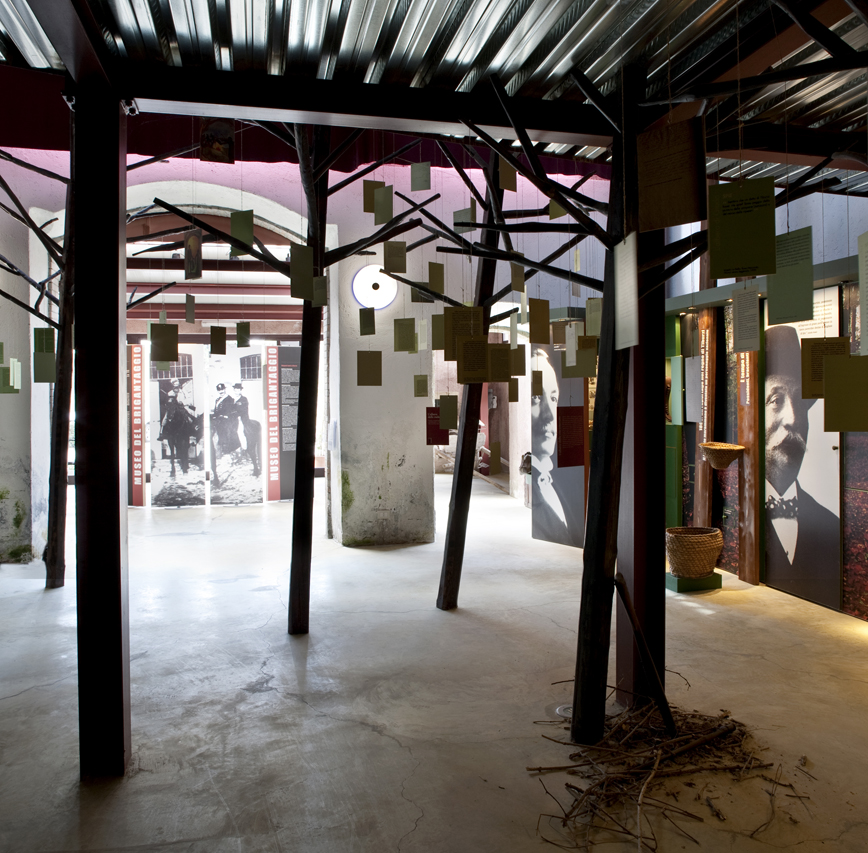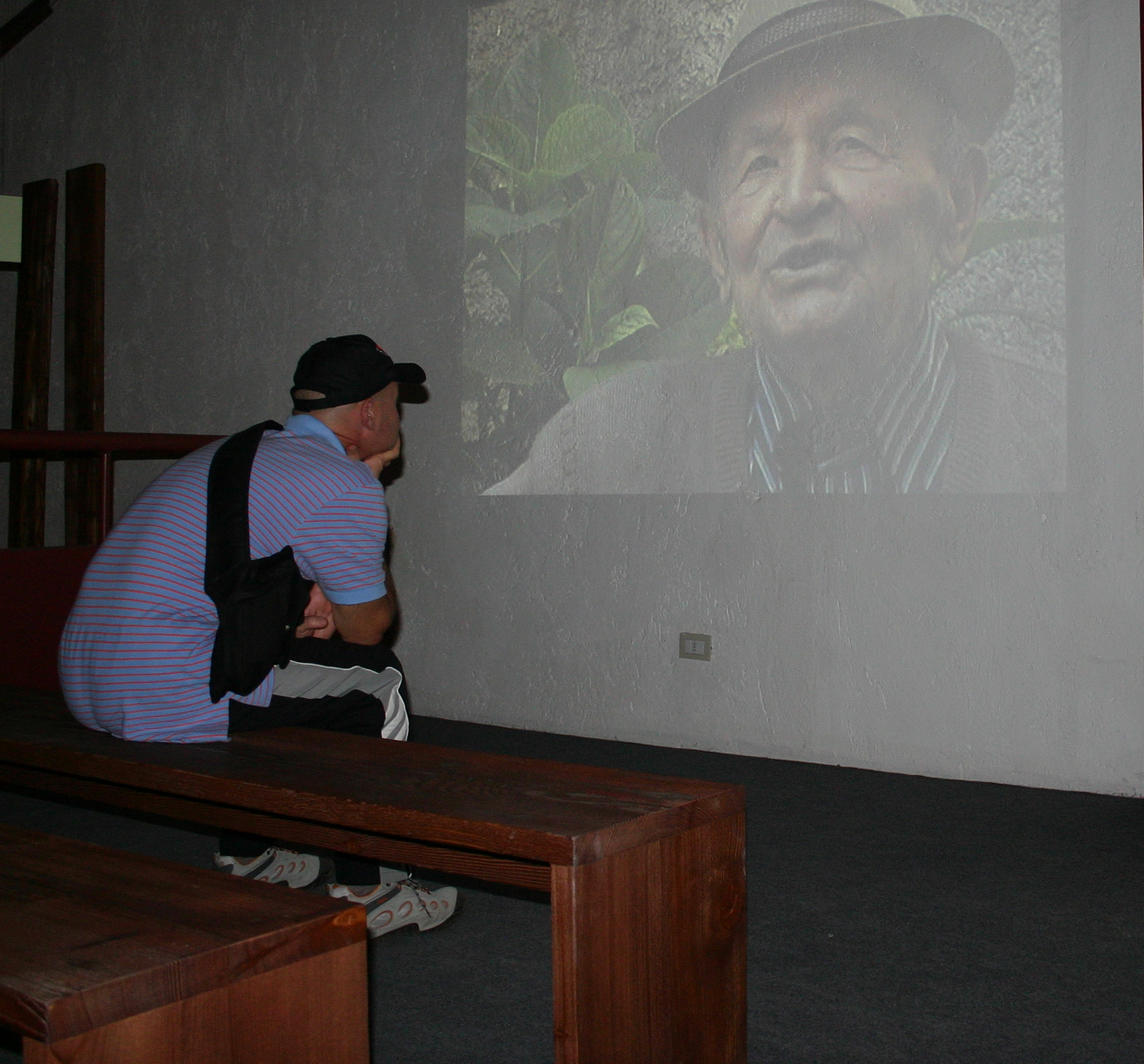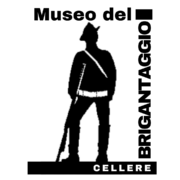Stories and uchronies
Stories and uchronies
Thestories reestablish the idea of characters, the brigands, that possess a dual consistency.
Not only real people, placed in a historical network of relationships but also imaginary figures capable of being in multiple places at once: just like the lively characters from local fables.
The Museo del brigantaggio adopts the “what if” way of thinking so often found in the tales of local storytellers.
What if that’s not how the story went? What if Triburzi didn’t die at the Forane?
It’s a way to rid old stories of predictable finales and to gift them, and us, a problematic ending.

By making their way to the upper floor, visitors leave behind Adolfo Rossi’s news reports, along with the stories and social, political and economic contexts that had a tangible impact on Tiburzi’s biography. There’s a change in perspective which allows visitors to reap the poetic fruits offered by the artificial trees, scattered downstairs.
Here is where the imagination takes over history’s objectivities, big and small.
The hall and the aisle are filled with grotesque figures, coalman puppets, fair artists and fairytale characters.
They mingle with visitors, forcing them to change their comprehension register.
An upside down world, realm of flesh and dreams, that slowly materializes through the exhibit, a sign of a trait well consolidated in popular culture.
Ambivalent characters with uncertain corporeal boundaries come to light, they live in forests and caves, rulers of no man’s land, masters of territories on the fringes of economic and community life. They are the protagonists of the fictional stories that make up the rich narrative repertoire of the local culture, where the figure of the brigand organically finds its place.

Theexhibition itinerary offers plenty of video documentation of the legends, still very much a part of today’s collective memory, about Tiburzi’s deeds as a local hero, protagonist of the history and local culture of his time, and still able to raise a renewed sense of pride in the local identity.
Feral shrewdness and ruthless brutality towards traitors and compassion and generosity towards the poor and their benefactors are the characteristics that stand out in the stories from the many informers and that are even more highlighted and stylized in the skillful dramatization by Antonello Ricci (and the Banda del Racconto): a polyphonic staging of several popular sources, strongly based on magical realism, that makes significant use of a dialectic style as well.
The brigand Tiburzi takes the form of an impressive, yet not entirely positive character, largely created by the local imagination. It would be a great mistake to underestimate just how much this rich and sparkly imaginary still converses with and draws from the local sentiment: it represents an active resource to fight against injustice and the nonsense of history. This way the social memory also becomes an outlet for the power of the weak, a manifestation of their inability to recognize themselves in the status quo, a way to imbue the world with their own meaning, to create solid, maybe fictional, versions of their existence and to fight to protect them.
In the final, surprising stretch of the exhibition path, the fictional and disturbing dimension takes over, as Tiburzi seems to survive his death, decreed in 1896 after being gunned down by the carabinieri (the Italian military police). Just like in many tales, including several short hunting stories set in the Maremma, he reappears alive and free. He never really died, is what the video maliciously suggests. Tiburzi, alive and looking fearsome, stealthily moves away from the pillar where, once murdered, he was lifted to be photographed, shortly before burial. He is alive, at least in the realm of imagination, willing to be narrated and interpreted by us peers.






